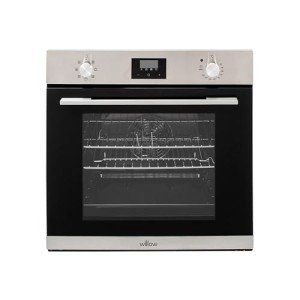How You Can Use A Weekly Inbuilt Cooker Project Can Change Your Life

The Inbuilt Cooker: A Comprehensive Guide to Modern Culinary Convenience
On the planet of modern-day kitchen areas, performance and style work together. The inbuilt cooker is an important appliance that shows this pattern, bringing both ease of usage and aesthetic interest culinary spaces. Unlike russell hobbs built under double oven , inbuilt cookers are integrated straight into kitchen cabinetry, using a smooth look that improves the general kitchen style. This post explores the various types, benefits, considerations, and maintenance pointers for inbuilt cookers, together with responses to often asked questions.
Types of Inbuilt Cookers
Inbuilt cookers been available in different styles and configurations to suit different cooking requirements and kitchen layouts. The following table summarizes the main types of inbuilt cookers offered in the market:
| Type | Description | Pros | Cons |
|---|---|---|---|
| Built-in Ovens | Integrated ovens installed into kitchen cabinetry | Space-saving, smooth design, numerous sizes | Installation complexity, cost |
| Induction Hobs | Cooktops that utilize electromagnetic energy to prepare | Quick heating, easy to clean | Needs suitable cookware |
| Gas Hobs | Cooktops using gas for heat | Exact temperature control | Requires gas line setup |
| Mix Ovens | Ovens that combine traditional and microwave functions | Versatile cooking choices | May be more costly |
| Steam Ovens | Use steam convection to prepare food | Retains moisture and flavor | Restricted cooking capacity |
Benefits of Inbuilt Cookers
Inbuilt cookers provide a myriad of advantages that make them popular options for modern cooking areas. These consist of:
- Space Efficiency: Inbuilt cookers are created to fit snugly into cabinetry, making effective use of kitchen space and enabling a more structured look.
- Enhanced Aesthetics: Their seamless combination adds to a streamlined and contemporary kitchen design, eliminating mess from countertops.
- Improved Functionality: Many inbuilt cookers come with innovative features like wise innovation, which permits users to control cooking settings via smart device apps.
- Variety of Options: Consumers can select from a range of styles and fuel types, including electric, gas, and even solar options, offering versatility to satisfy individual cooking choices.
- Increased Safety: Built-in units often feature security features such as vehicle shut-off, making them safer than standard cookers.
Factors to consider When Choosing an Inbuilt Cooker
While the benefits of inbuilt cookers are clear, prospective purchasers need to consider numerous elements before making a purchase:
- Space and Measurements: Ensure your kitchen has enough area for the inbuilt cooker and consider the measurements of the unit relative to your cabinetry.
- Fuel Type: Decide between electric, gas, or other combustion types based upon your cooking requirements and kitchen setup.
- Cooking Preferences: Assess the types of meals you commonly prepare and select a cooker that offers the functions and functions you need.
- Spending plan: Inbuilt cookers can vary significantly in rate. It's important to set a budget that considers both the purchase cost and potential installation costs.
- Installation Requirements: Some inbuilt cookers might require expert installation, particularly gas designs. Make certain to factor this into your overall job costs.
Maintenance Tips
To ensure the durability and performance of an inbuilt cooker, regular upkeep is important. Here are some crucial ideas:
- Regular Cleaning: Clean the surfaces and interiors according to the producer's guidelines. Avoid abrasive cleaners that could scratch or damage surfaces.
- Inspect Seals and Gaskets: Periodically inspect door seals and gaskets for wear and tear, as this impacts cooking efficiency and energy usage.
- Adjust Temperature Settings: Test the temperature settings periodically to ensure precise cooking efficiency.
- Professional Servicing: Schedule routine expert examinations, specifically for gas models to ensure safety and appropriate performance.
Regularly Asked Questions
1. Are inbuilt cookers more costly than standalone designs?
Inbuilt cookers can be more costly due to their sophisticated functions and built-in style, however they also offer boosted aesthetics and functionality, which may justify the investment.
2. Can I install an inbuilt cooker myself?
While some designs have user-friendly plug-in choices, professional setup is usually advised, specifically for built-in gas cookers that need correct ventilation and security checks.
3. What are the advantages of induction hobs compared to gas hobs?
Induction hobs warm up much faster, are generally much safer because they do not produce an open flame, and are simpler to clean up due to the flat surface area. Nevertheless, they require compatible pots and pans and may have higher upfront costs.
4. How can I enhance the efficiency of my inbuilt cooker?
Utilize the appropriate cooking settings for different types of food, keep the interior and exterior clean, and ensure proper sealing and insulation to improve performance and decrease energy consumption.
5. What features should I look for in an inbuilt oven?
Consider features such as self-cleaning functions, programmable settings, temperature probes, and clever innovation abilities for enhanced benefit.
Inbuilt cookers represent a fusion of performance and design that empowers home cooks to explore their culinary enthusiasms with ease and efficiency. As they come in various types to fit diverse cooking styles and kitchen designs, understanding their advantages and factors to consider enables consumers to make informed options about this important kitchen appliance. With appropriate setup and maintenance, an inbuilt cooker can end up being a valuable property in any modern-day kitchen, making cooking a satisfying and hassle-free experience.

